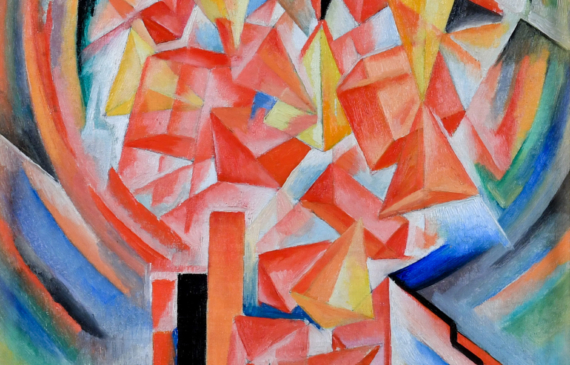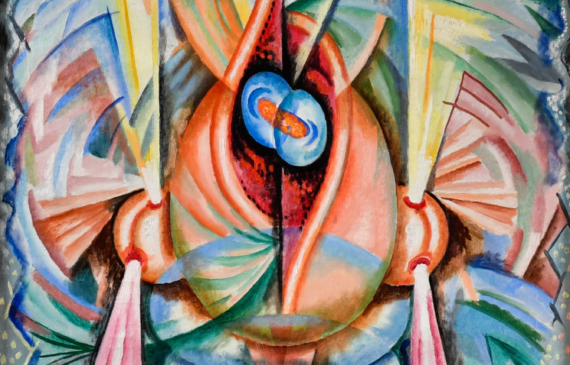
Frederick Buchholz (American, 1901-1983)
Untitled, c. 1927
Oil on canvas, 16 H. x 12 W. inches

Frederick Buchholz (American, 1901-1983)
Untitled, c. 1927
Oil on canvas, 30 H. x 20 W. inches
Frederick Buchholz, born 1901 in Springfield, Massachusetts, was an industrial-era modernist painter whose work focused on urban and rural landscapes, entertainment, and genre scenes. His works feature a very distinct color palette, employing vibrant tones to achieve dramatic contrast and develop a style that was uniquely his own.
He began painting as an adolescent with local painters who gave him pointers along his way, moving to New York City as a young man in search of a greater artistic direction. Once there, he enrolled at the Art Students League and studied under Kenneth Hayes Miller, whose students included Peggy Bacon, George Bellows, and Yasuo Kuniyoshi, among others. Buchholz was involved with the Society of Independent Artists between the 1920’s and 1940’s, a coalition formed by artists to circumvent the rigidity of juried exhibitions.
The artist was always placed on somewhat of a back burner despite his notable exhibition history, as he was uninterested in catering to the sensibilities of the commercial art world. In line with his independent tendencies, he took an organizational role with the Society from 1935 – 1944, first as treasurer and then secretary. Buchholz preferred compositions shifted focus over the course of his career, but were always executed in a style that was identifiable as his own. From the abstract, futuristic paintings that evoke a sense of industrialism to the whimsical paintings of circus folk and the serene landscapes of Lyme, the artist conveyed a true sense of American life. His portraits of working class people and country hillsides are now highly nostalgic pieces that prompt the viewer to reminisce of a different time and contemplate the artist’s inspiration in color and theme.